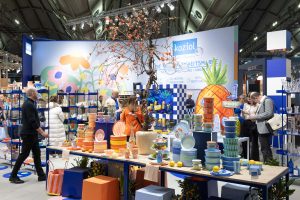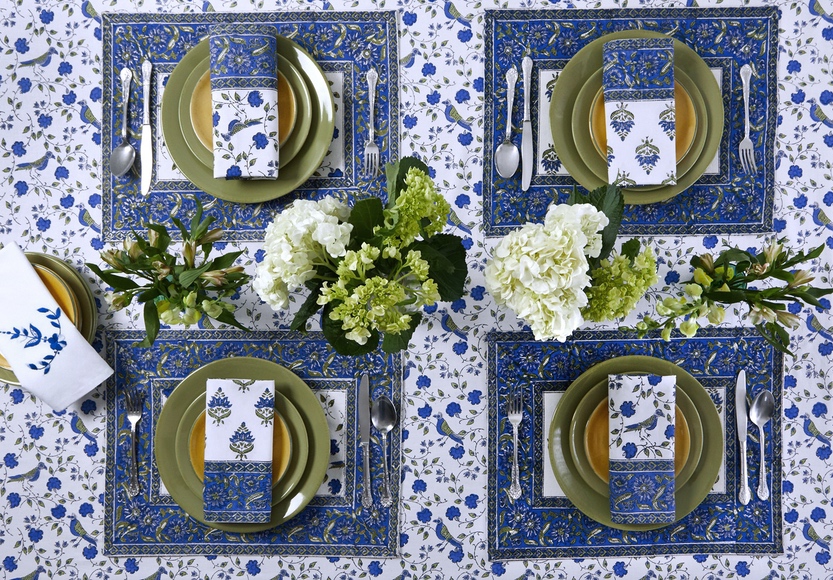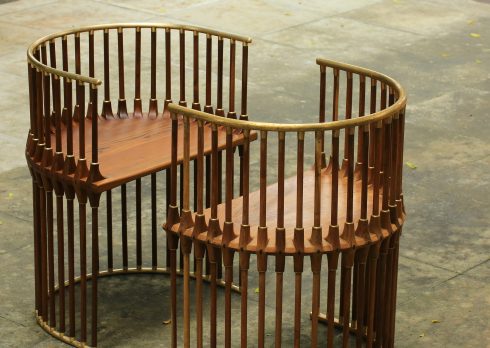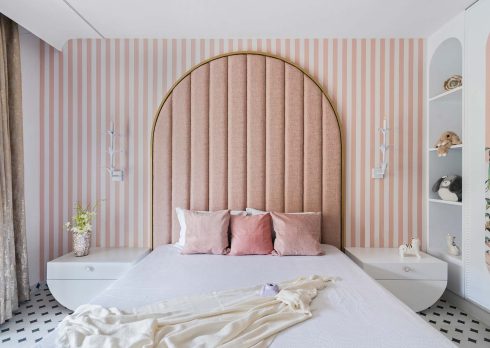Artisanal brands taking Indian textiles to the world
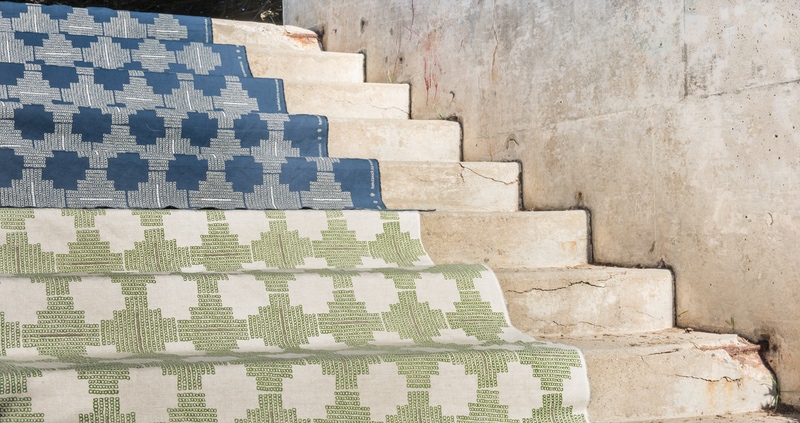
Reams of carefully preserved fabrics definitive of the length and breadth of India are on display at the ‘Fabric of India’ exhibition at The Ringling in Florida. The exhaustive travelling exhibition — first opened at the Victoria and Albert Museum in 2015 — explores not only the craftsmanship of the country’s textiles but also the story each textile tells about the social, economic and political exchanges that provoked their creation and consumption.
Still driven by craftsman deep in the hinterland, in villages and in small towns, India’s artisanal textile tradition is rich, varied and very much alive. And yet, the country’s textile industry of today isn’t quite as organized as it deservedly should be. After all, there are but a few civilizations in the world that can lay claim to a textile heritage as rich as India’s which dates back to as far as the 3rd century.
Thankfully, Indian textiles crafted using indigenous techniques are enjoying more than just a moment in the sun in India and beyond — its appreciation, driven largely by the design world and, of course, expositions such as the expansive V&A exhibition. Exploring the close relationship between the artisan and the designer, we highlight a few brands taking Indian textiles into the homes of the design-conscious across the world. Here, Design Pataki talks to three revivalists who remain committed to keeping India’s textile heritage alive.
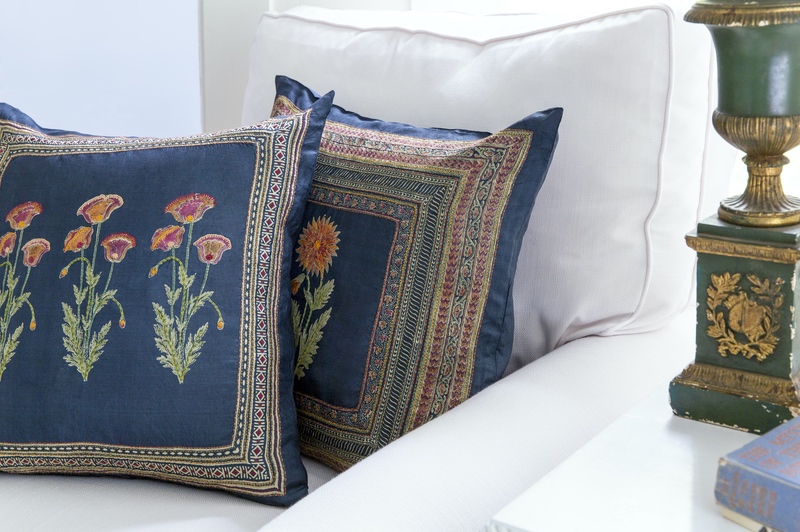
Shreya Shah, Marigold Living
New York-based home textile brand Marigold Living known for its block prints recently collaborated with Moda Operandi to design an exclusive collection of rich blue silk pillows that combine embroidery and discharge printing techniques. “The Botanical pillow collection showcases the high-end expertise of artisanship in India and broadens the awareness of a global audience to the wealth of artisanship that Indian culture offers,” says Marigold Living founder Shreya Shah. Shah works with artisan shops — both non-profit and for-profit businesses — to commission pieces from the Indian artisans the textile design brand works with. “What we typically find only in sarees is translated into a modern-day lifestyle product that can be enjoyed by international consumers, while preserving the heritage Indian aesthetic and craftsmanship,” she explains.
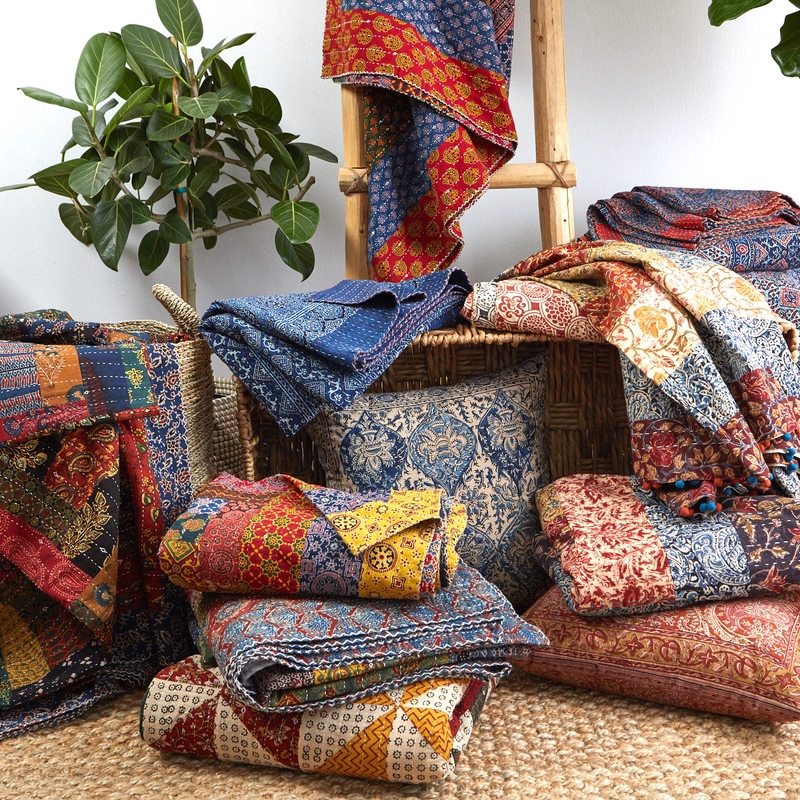
But even beyond this exciting collaboration, which most certainly is a sign of things to come, one sees and feels a certain authenticity attached to every home textile on the Marigold Living website. Whether it’s the block print table and bed linen or the pristine white curtains with applique, the brand stays true to its Indian roots — in terms of motifs, colours and techniques. Shah launched the brand on a very small scale in New York in 2009. Even she admits that it was, at first, a passion project. Growing up in Mumbai, she remembers rummaging through cotton, silks, brocades, weaves and embroideries with her mother and sister in search of the best textiles for their home and wardrobes. “When I moved to New York in 1995, I did not find anything well made from India that I grew up with. I did an entrepreneurship class as a part of my MBA at NYU and this was my project – so it has been something I have been fascinated by for a very long time, and finally could make it work,” she says.
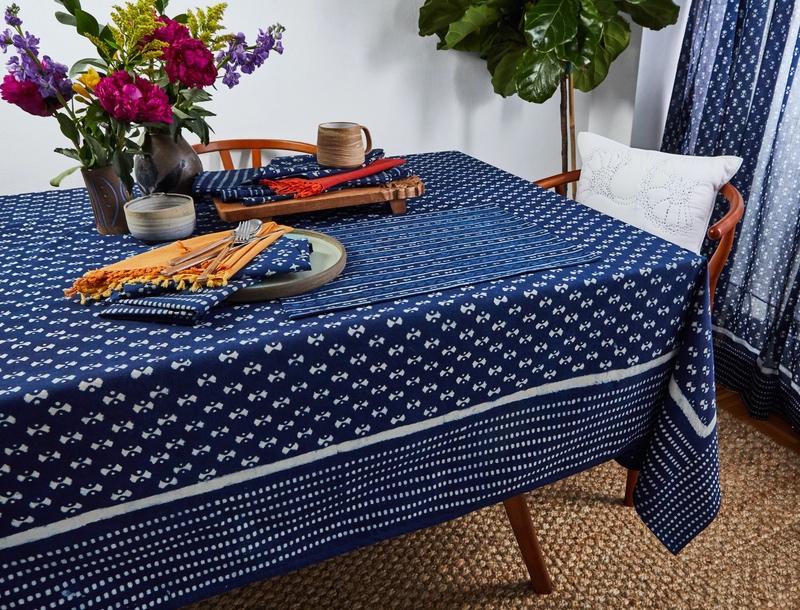
With the launch of Marigold Living e-commerce website in 2017 and after showing at the AD Design Show in 2018, the brand became a mainstay on the pages of international design magazines. “I think heritage Indian textiles have always been sought after globally for centuries, and one can see adaptations from classical Indian and Persian designs in textiles made by Western textile houses who carry a big repertoire of heritage Indian designs. The most important aspect in my view is keeping the authenticity of Indian design and technique (intact) when creating these fabrics for the international market. Only then you can make true Indian classics that will resonate today as they have throughout history,” says Shah.
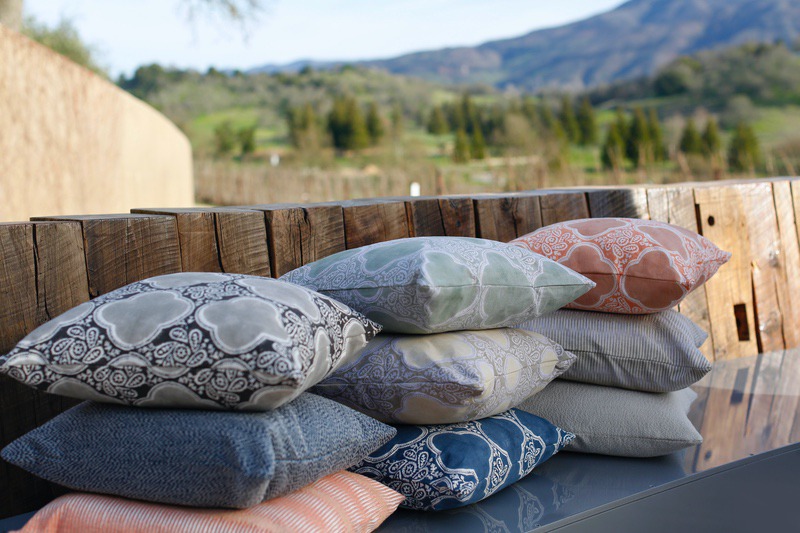
Seema Krish
San Francisco-based textile designer Seema Krish works with craft communities in Bengaluru to bring her designs to fruition. Using techniques like block print, weaving, embroidery and shibori, her collections of wall coverings and pillows carry a contemporary aesthetic and each design is inspired by her travels. You’ll find prints that link the early 20th-century architecture of Napa with its lush greenery; another that pays tribute to Tribeca; and still, others inspired by Mumbai. That Indian textiles are very much celebrated in all corners of the world is evident in the brand’s presence in stores across the US, and in Australia, London, Toronto and Paris. “There is an increased demand and value for sustainable, handcrafted and luxurious textiles made by Indian craftspeople,” says Krish, adding that Indian textiles are relevant and well-received for their authenticity and uniqueness.
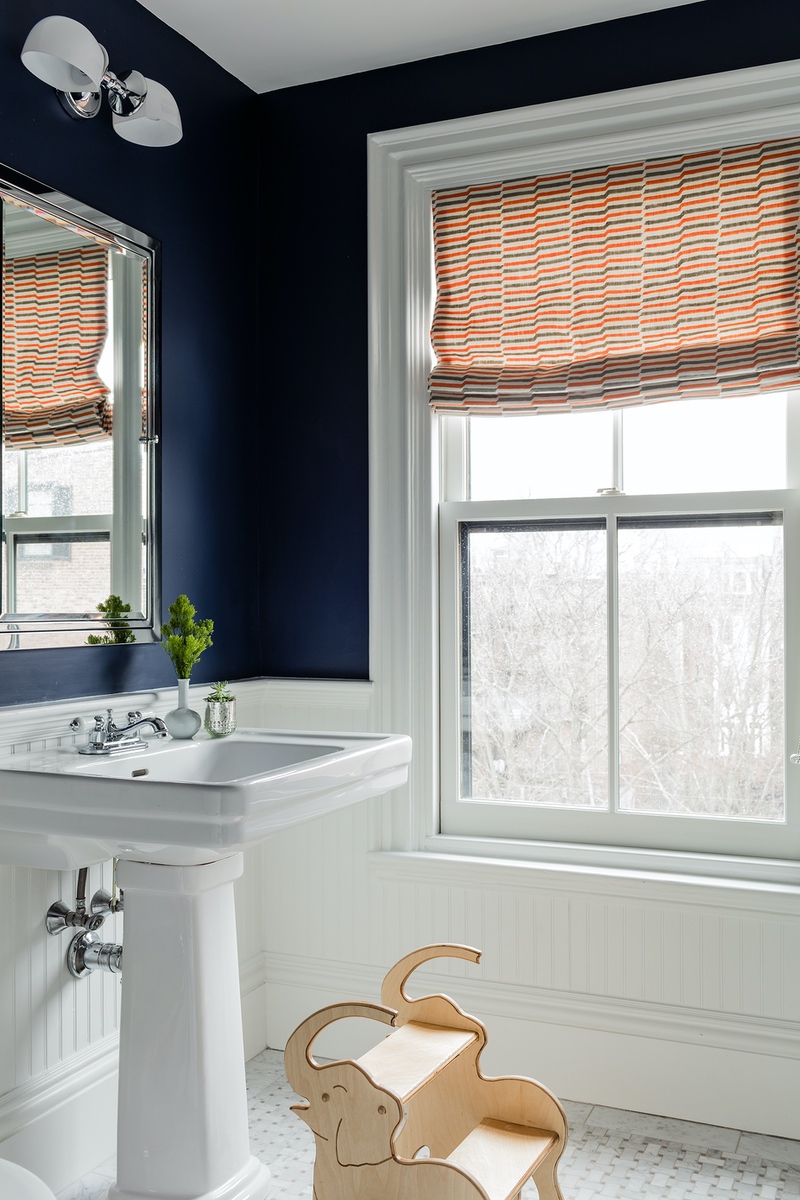
Krish worked in the textile industry for 15 years before launching her eponymous studio in Boston in 2012. “I most enjoyed working with craftspeople and textiles that spoke of the hands that made them,” she says about her time at Robert Allen Design and NUNO. Now, Krish fires up the design process with drawings and plans of the dimensions of print, weaves and embroidery as she works out of her studio in San Francisco, after relocating in 2013. Most often, though, new designs come to life on her frequent visits to Bengaluru where she collaborates with the craftspeople — block printers, embroiders and weavers — with whom she’s built lasting relationships with. She had, after all, lived in the city for ten months before she launched her studio in 2012 to “better understand the nuances involved in working with these communities”.
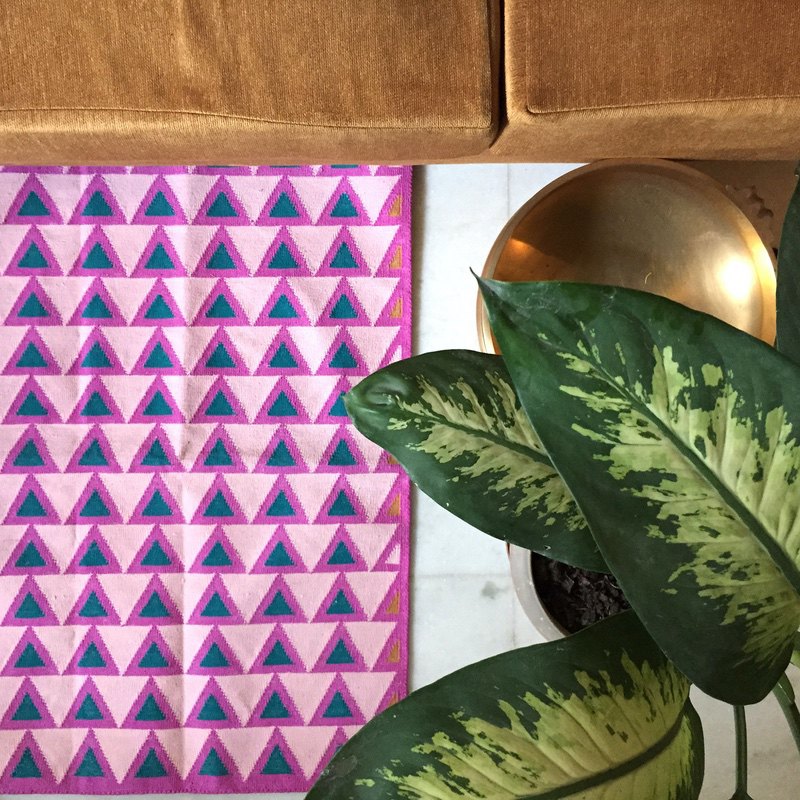
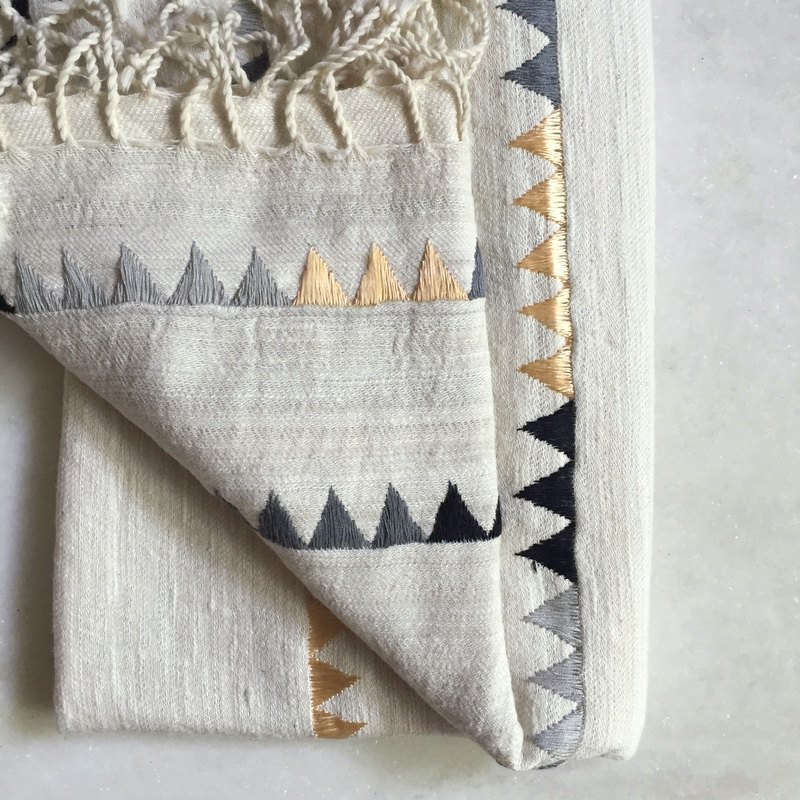
Leah Singh
Leah Singh’s designs are rooted in tradition but have a modern, minimalist appeal. Her eponymous New York-based home textiles brand launched in 2012 comprises collections of cushions, throws and rugs crafted by artisans across India. Packed with geometric patterns and motifs, Singh’s designs are a nod to her love for architecture, Art Deco, the Bauhaus movement, the 80’s, and tribal textiles from India and Africa. On graduating from the Parsons School of Design in New York where she had studied industrial design, she looked to the traditions of Indian crafts to create modern objects. While she originally specialized in sculptural jewellery, the transition to textile design was organic. For the designer who grew up in Delhi, it was a venture fuelled by memories of the patterns, colours and textures she was exposed to in the craft markets of India. “I saw endless possibilities to use traditional textile techniques in a new way and was saddened to know that these crafts are slowly dying,” says the textile designer.
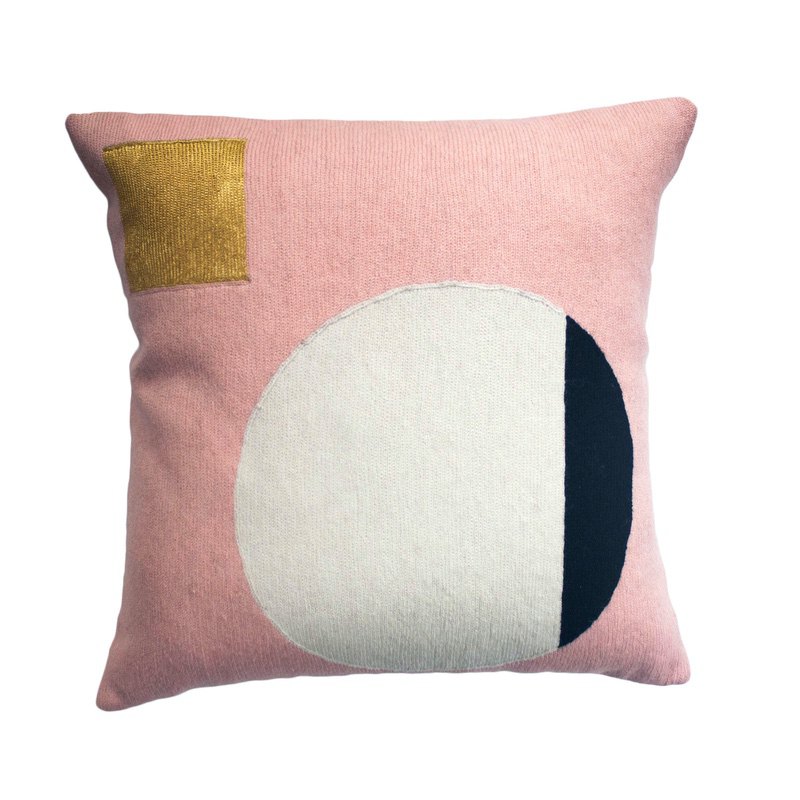
In the early days, to create her initial collection of Kantha pillows, Singh revisited the craft markets of India exploring various textile techniques to find the right fit for her aesthetic. She now uses six different techniques, each executed by a different artisan group in India including women weavers from Northeast India, Rajasthani block printers and weavers, and embroidery artisans from North India. Most often she will send the artwork, colour references and required materials to the artisans to make initial samples. A phone call and a month later, the samples arrive in Delhi where they are cut and sewn to shape. There are times when Singh travels to India for the initial sampling, which, she says, reduces any back and forth besides allowing for a good deal of experimentation. Once samples are finalized, an order is placed with the artisans, the delivery of which could take anywhere from a month to 90 days. “Because of the nature of the craft sector, being a cottage industry where artisans work from home and on their own time, and most take time off during the farming season, the process is very organic and not perfectly streamlined. It is natural and old-school, which I enjoy,” says Singh.




